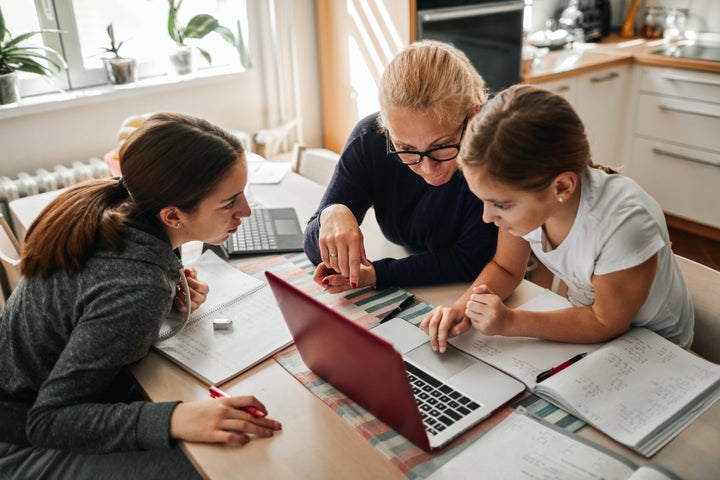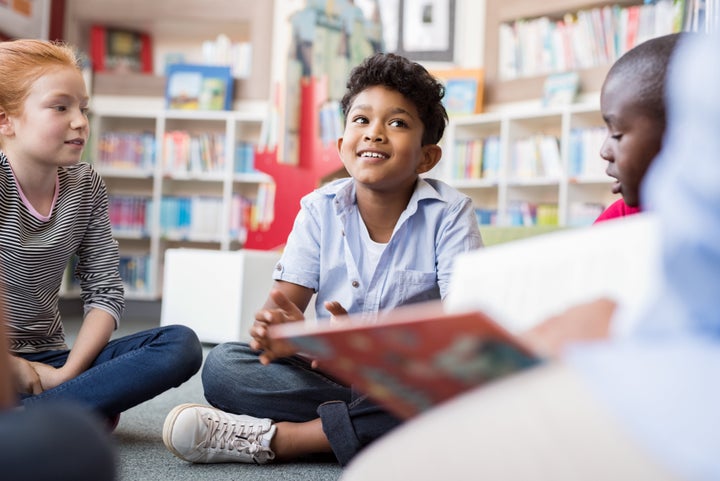
Back-to-school has been fraught this year, and many parents have been joining together to create “learning pods,” rather than send their kids back to physical classrooms. This allows them to keep their children bubbled in small groups and avoid the health risks of things like being unable to properly physical distance in classrooms or taking the school bus with kids from outside a single-class cohort.
Running in tandem with the COVID-19 pandemic has been a global wave of protests for racial equity. The Black Lives Matter movement has drawn attention to rampant, systemic inequity and institutionalized racism in our public systems. These things may not seem directly connected, but if we look at how pods have been forming, it clearly shows the inequities built into our educational system and how the pandemic is reproducing and even amplifying them.
What are learning pods?
Learning pods are essentially miniature homeschools, composed of small groups of children, from more than one household, who learn together in one space, with shared resources.
Rachel Danzinger-Marmer, a Toronto mom of 4 children enrolled in the private school system, is concerned about student safety as school districts nationwide prepare to reopen without reducing class sizes. She has created a Facebook group of learning pod resources — which now has more than 11,000 members across Canada.
“School boards across the country are already fraught with inequity — the self-formed pod system will increase it.”
“We can get creative to educate our kids in a way that feels safe for our families. It doesn’t have to mean withdrawing from public education or spending a lot of money,” said Danzinger-Marmer.
After conducting a survey, to which 624 families responded from across Canada, Danzinger-Marmer’s organization, Learning Pods Canada, found most respondents were choosing to keep their children enrolled in school, but planned for them to learn remotely and were seeking additional educational and social supports.
“Many families [surveyed] are going to start out in the classroom, but are forming contingency pods so they have a plan if we go into another lockdown,” said Danzinger-Marmer, who’s working on a tool to match families based on expressed criteria.
What are the equity issues?
Bringing small groups of kids together to learn sounds nice — but pods can rely heavily on parents’ existing connections, meaning all the kids in the pod are more likely to be very similar socioeconomically.
Parents are more likely to connect with others who speak the same language, live in the same neighbourhood and have similar access to technology and parental supervision. In practice, this means diverse classrooms are likely to splinter into non-diverse pods, and that means the wealthier the family, the better-resourced the pod.
School boards across the country are already fraught with inequity — the self-formed pod system will increase it.

Students most at risk of being excluded from pods are those whose parents work long hours, have frontline jobs, speak English as a second language, are cultural or racial minorities in their schools, have chronic health conditions that make them higher-risk or have a lower household income or less access to technology. These children and youth could be left behind in the event of another lockdown.
Fernanda Yanchapaxi, a Spanish-speaking community advocate and member of the Davenport Mutual Aid Network, is questioning how parents who can’t access the necessary tools are supposed to support remote learning.
“Language barriers, lack of knowledge about the system, technology…. I’m really scared that remote learning is just going to push kids out of the system, particularly kids from communities that already have a high dropout rate,” she said.
“Across Canada, people are using their own resources to abandon a system that’s not working for them.”
Students’ ability to get online can also be an issue.
Deqa Nur, a social development worker in Toronto’s Rexdale neighbourhood, is concerned students may not have access to technology, including reliable internet and dedicated devices. What happens if a parent and two siblings are all at home trying to share a single laptop? Or what if the supervising parent isn’t tech-savvy?
The inequities aren’t always financial either — social capital can also play a role in families’ capacity to form and join pods.
According to Owen Hinds, Director of Pathways to Education, Unison Community Health Services, in Lawrence Heights, where the mean annual income is below the poverty line at $17,000, families who live within the same apartment complexes and share deep social ties have started to form learning pods.
Even when income disparity isn’t an issue, social factors such as introversion, anxiety or shift work that make playground socializing difficult can interfere with parents’ ability to join pods.
Language barriers can be another major issue for parents when advocating for their children.
“Many parents need translated information in order to make informed decisions, so plans haven’t been communicated to all communities,” said Nur.
Where do we go from here?
Pods are a way for well-resourced families to bypass a broken system, creating automatic inequity. We need to act quickly before our communities stratify into two streams: well-resourced homeschools and risky classrooms.
To make schools safer and mitigate wealthy families’ attrition from the system, we urgently need bigger budgets, smaller class sizes, outdoor learning plans and properly ventilated school buildings.
To help level the distance-learning playing field, provincial governments need to fund the temporary formation of pods and subsidize resources necessary to support those pods for lower-income families.
But it’s also time for systemic reform — with equity at the centre. Privatization will harm our children — and, in the long term, our society — by further marginalizing already vulnerable communities. Accessibility looks different for everyone, so a one-size-fits-all approach will continue to disenfranchise students whose identities don’t align to the average.
As pod learning expands, a sample of pods across socioeconomic, racial and cultural groups can be consulted to provide insight into what’s needed both for this stopgap solution to work, along with insights that can be carried forward to create a more ideal public education system.
Across Canada, people are using their own resources to abandon a system that’s not working for them. This should be an alarm bell to our leaders that the education system is desperately in need of reform — and that they must improve equity and student success as well as how they communicate vital information with families.
And when the next wave of infection unavoidably spikes this winter, they need to be ready to support pod learning as a feasible short-term solution for all families.
WATCH: This Is What Classrooms Look Like In A Pandemic